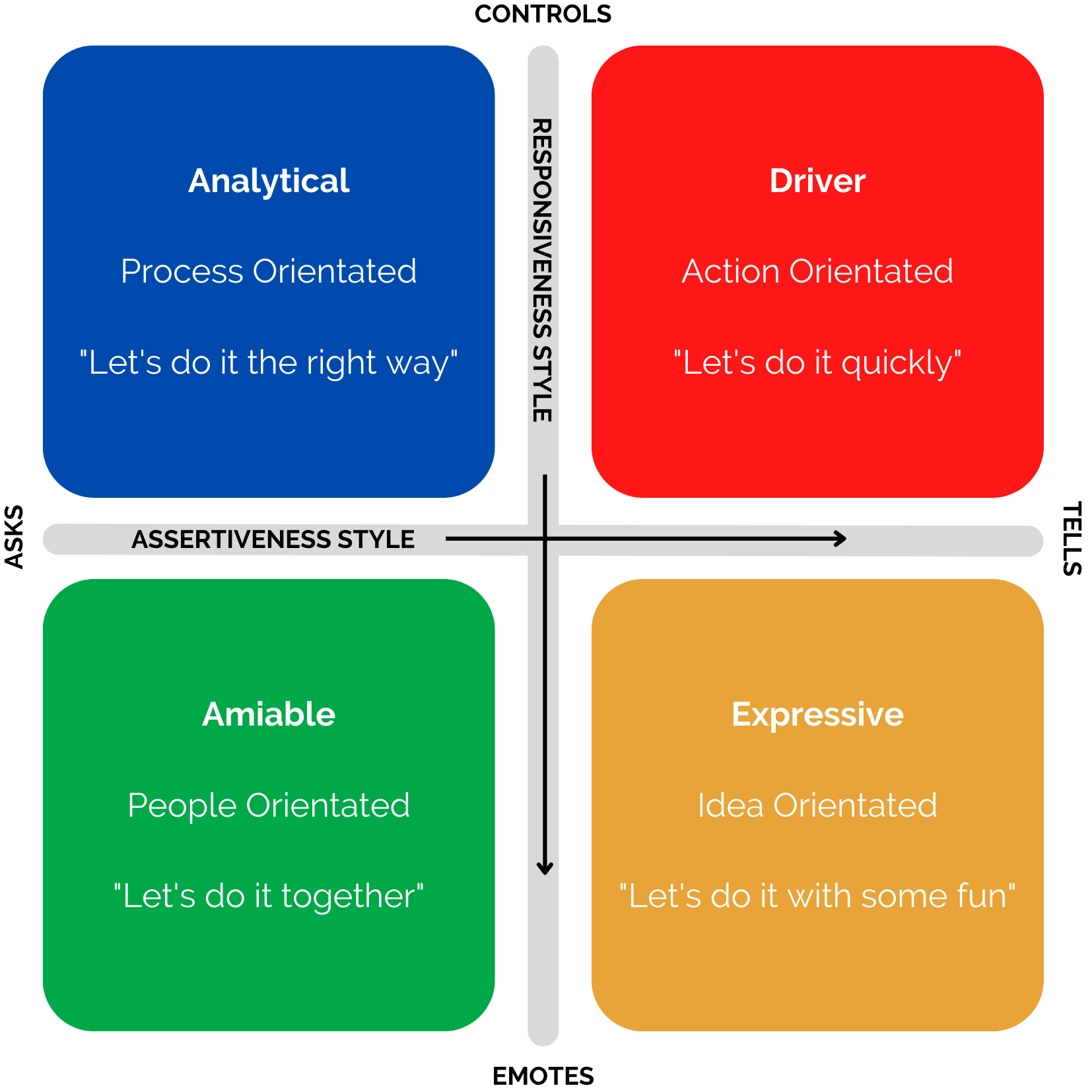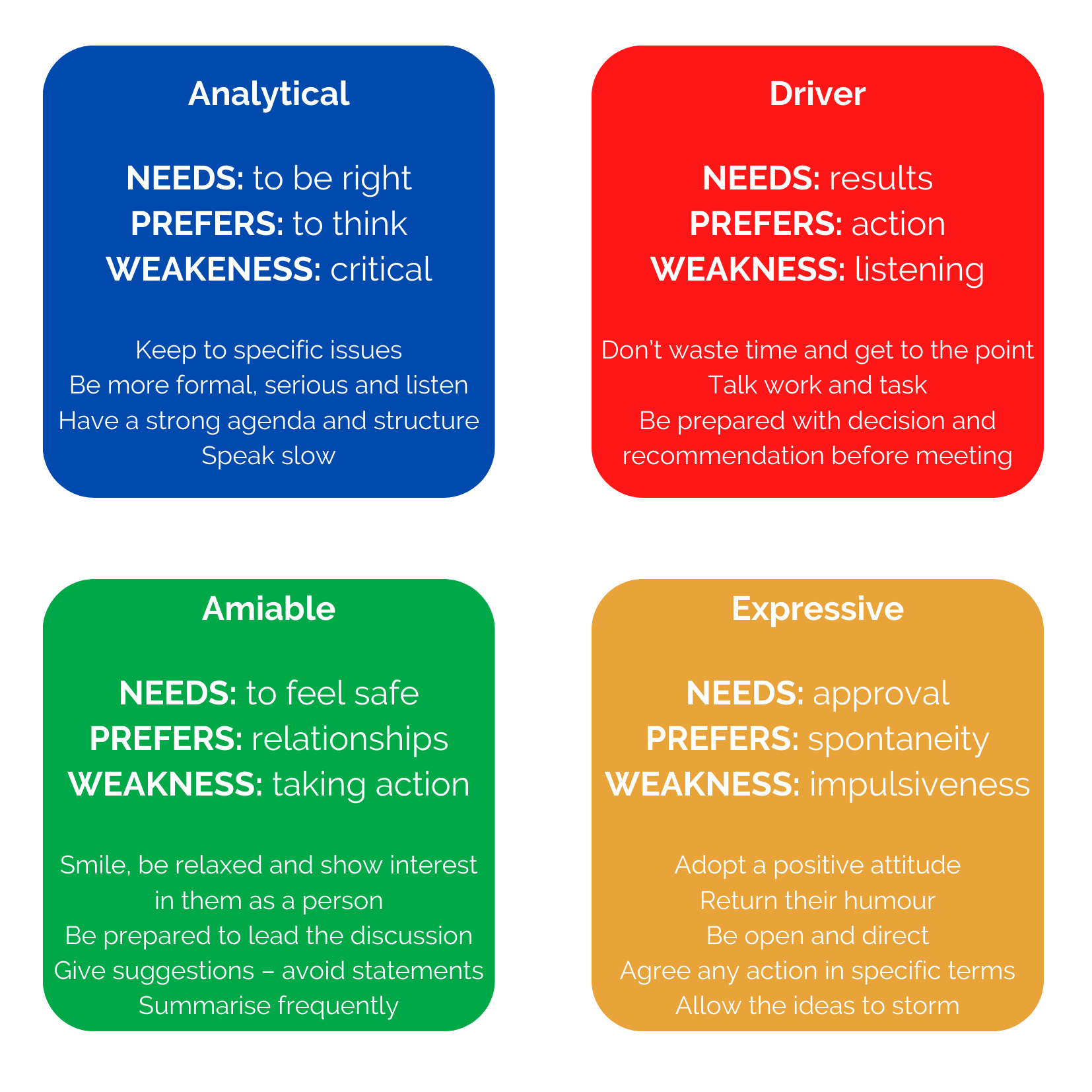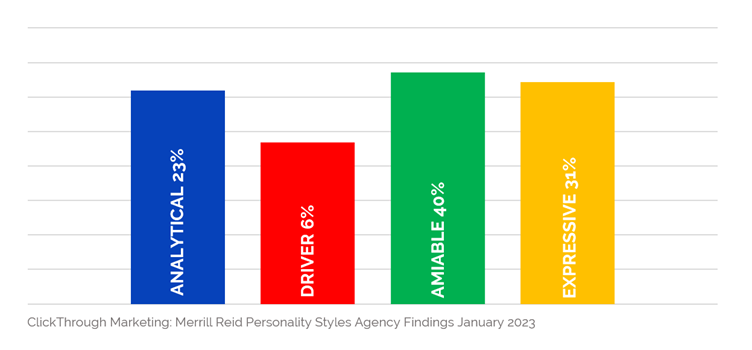Meet our February Employee of the Month - Joe Wheeler
Our February Employee of the Month is Joe Wheeler!
Read moreUnderstanding Merrill Reid Social Styles in the Workplace. Learn how the Merrill and Reid Social Styles method can be utilised to get the most from your team.
Can managerial, leadership and sales performance be predicted?
In the early 1960s, two industrial psychologists, David Merrill and Roger Reid, underwent a study exploring how people interact and communicate in social situations. The purpose of this study was to understand whether performance could be predicted for leadership, managerial and sales performance. Upon this, they discovered that people’s behaviour follows two continua, which they labelled: assertiveness and responsiveness.
Following this, four social styles were developed, each characterised by specific behaviours, attitudes, and communication patterns. This is referred to as the Merrill and Reid Social Styles Model.
Analytical Style: This style is characterised by reserved and logical behaviour, a focus on facts and objective information, and a low tolerance for ambiguity.
Amiable Style: This style is characterised by friendly and cooperative behaviour, a focus on harmony and maintaining relationships, and a low need for control.
Driver Style: This style is characterised by assertive and direct behaviour, a focus on results and meeting goals, and a high need for control.
Expressive Style: This style is characterised by outgoing and enthusiastic behaviour, a focus on being creative and optimistic, and a need for self-expression.
These can be mapped in the Merill and Reid social styles model:

While all four approaches are at the disposal of each and every individual, there is a tendency for most of us to adopt one approach more than the others.
Individuals tend to have a dominant social style but can also exhibit behaviours from other styles in different situations.
The dominant style can be described by:
But why is this important in the workplace?
Collaboration is essential in business, tailoring your team depending on the objective, can support a successful outcome.
For example: an ideation session for a creative campaign.
Filling this meeting with employees that adopt an analytical and driver personality style, you’ll be sure to get a list of actions but it’s fair to say that creativity will be lacking. This type of meeting needs some expressive working styles.
Understanding and utilising different social personality styles is also important for motivation and mental wellbeing. Although we will display traits of all styles, being pushed out of our comfort zone too much can lead to burnout.
Understanding and recognising the different Merrill and Reid social styles can help individuals communicate more effectively and build better relationships with others.
Whilst an individual may dip in and out of all four approaches, most of us tend to favour one approach more than the other.
For using personal styles when working with others, it is important to consider their needs and styles. You also need to be aware of your own style and biases and try to understand and relate to those who may have styles that are different to yours.
By understanding your own personality style and that of others around you, will allow you to become more versatile. Most people’s social preferences are different to yours and tension happens because of differences and, even if we’re in our comfort zones, our behaviour might be creating tension for someone else.

The key to successful and fruitful relationships is to understand the preferences of the people you interact with and adjust your behaviour accordingly.
We’ve all heard the saying “treat others how you would like to be treated” but if your preferences and styles differ, this can cause a hostile environment. Therefore, the key to success in personal relationships is not to treat others how you would like to be treated but to treat others how they would like to be treated.
At ClickThrough, we’ve developed our recruitment process to now include the completion of the Merrill and Reid social styles questionnaire, but why? To understand how individuals can fit within teams, pre-empt working preferences and to ensure we adapt our employee experience accordingly. In fact, we know the social style of everyone within the business.

Do our findings reflect job role?
Yes.
Many who have worked with us have complimented our friendly nature, welcoming and keen to form strong relationships, amiable is our most possessed style at 40%. This style dominates our sales and marketing team.
31% of employees are expressive, although a healthy number within each team, our social, design and conversion optimisation team came out top with more than half in these teams adopting this style.
When it comes to data, it was sure our technical SEO team came out strong as analytical. 23% of our agency is dominated by this style.
We have a low number of drivers within the agency but found that senior leaders are more likely to have this style.
Talk to us to find out how a broad spectrum of personality types can come together to make your marketing strategy a success.
Photo by Nick Fewings on Unsplash
More articles you might be interested in:

Our February Employee of the Month is Joe Wheeler!
Read more.png)
Our November Employee of the Month is Jack Fisher! For his exceptional performance, he'll get a £50 voucher for a place of his choice, a...
Read more
Our October Employee of the Month is Jack Adams! For his exceptional performance, he'll receive a £50 voucher of his choice, a commemorative mug and...
Read more
Our August Employee of the Month is Beth Massey - who is now a two time winner after picking up her first award in 2022. In return for her exemplary...
Read more
Learn more about the journey of Sam Brookes, ClickThrough's Analytics Manager, who has grown with the company for over ten years. Learn about her...
Read more
The recipient of our July Employee of the Month award is Zoe Barlow! As a token of her outstanding performance, she will be presented with a £50...
Read more
The winner of our June Employee of the Month is Evleen Gray! As a winner, she will receive a £50 voucher of her choice, a commemorative mug and the...
Read more
The winner of our May Employee of the Month is Laura Köcher! As part of winning, she'll receive a £50 voucher of her choice, a commemorative mug and...
Read more